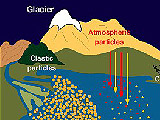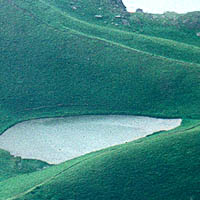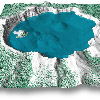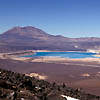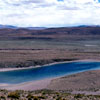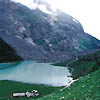 |
|
|
|
|
|
|
|
| Sedimentation processes in lakes Cores consist of sediments deposited over long periods of time. Hence, they provide evidence of changing processes in the catchment and the region (see figure 1). Clastic input: Debris from slopes, particles from volcanic eruptions, etc. Clastic input may give indications about storm events, natural disasters, humid or dry periods, etc. Biological input: Pollen and plant macrorests indicate the former vegetation. Chemical input: Ions precipitate out of the saturated lake water, e.g. calcite. Human impact is e.g. given by fertilizers (causing high eutrophication and therefore algal production), industrial pollutants, erosion due to agriculture or solid waste.
|
1 - Overview of sedimentation processes |
|
||||||||||||
|
Remote mountain lakes in Europe (EMERGE) | |||
29 August 2011 |
||
| |
||
 Lakes
provide a key to the past. They form important climate archives, also
in alpine regions. Lakes ideal for palaeoclimatic studies show the following
characteristics:
Lakes
provide a key to the past. They form important climate archives, also
in alpine regions. Lakes ideal for palaeoclimatic studies show the following
characteristics: